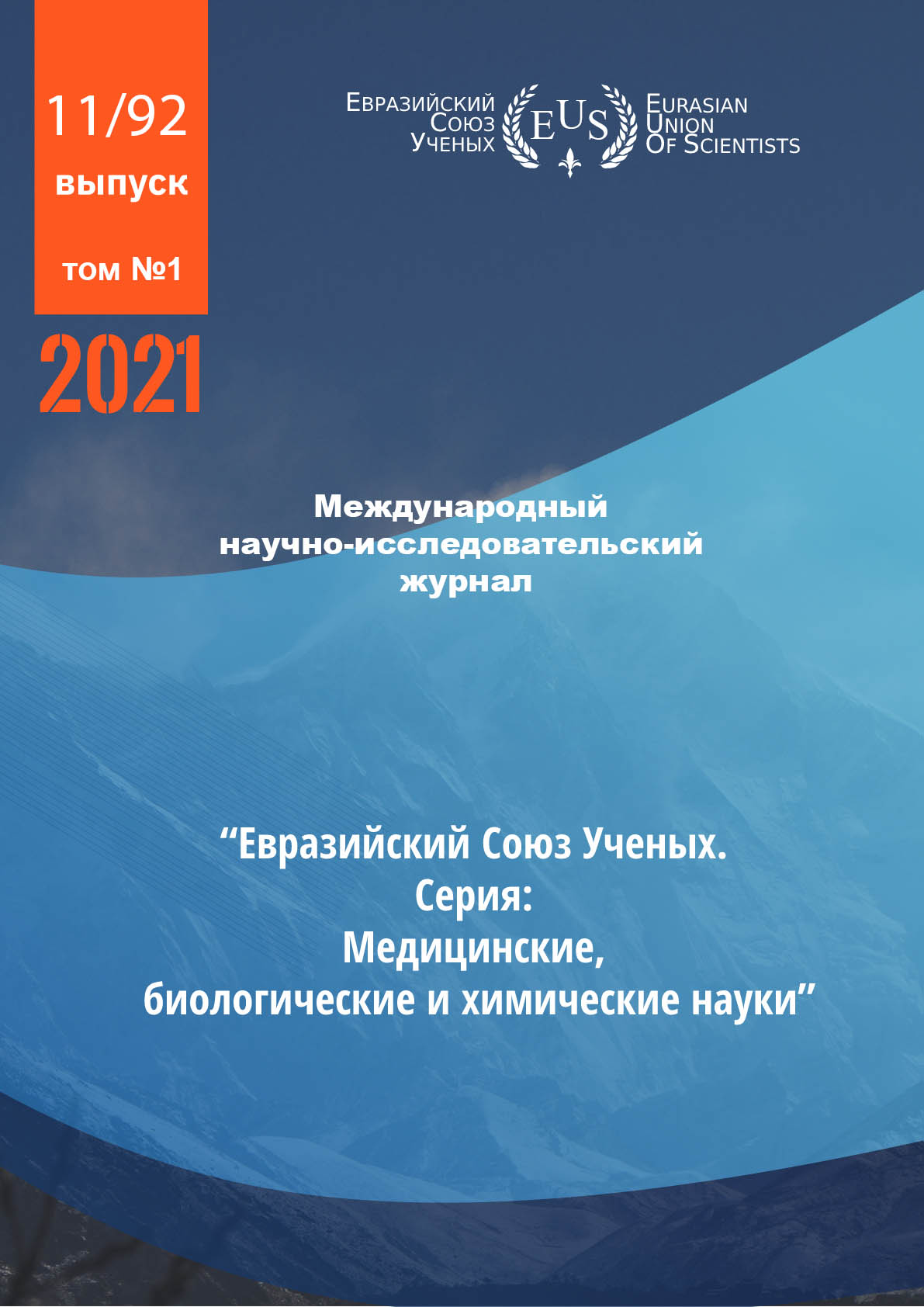QUALITATIVE AND QUANTITATIVE ANALYSIS OF FLAVONOIDS DURING DEVELOPMENT OF ANTIDIABETIC EXTRACT
Abstract
During development of antidiabetic extract in blueberry shoots (Vaccinium myrtillus L.), ginseng leaves (Panax ginseng C.A.Mey.) and water-alcohol extraction from this plant material the flavonoid content is studied because this group of biologically active substances has hypoglycemic effect. Qualitative reactions for different groups of flavonoids has confirmed their presence in blueberry shoots and ginseng leaves. In addition, qualitative analysis of water-alcohol extraction on their base using spectrophotometry has also showed presence of this group of biologically active substances. Along with that, quantitative content of flavonoids has been detected using differential spectrophotometry in blueberry shoots, ginseng leaves and water-alcohol extraction on their base.
References
Hui Xu , Jia Luo, Jia Huang, Qian Wen Flavonoids intake and risk of type 2 diabetes mellitus: A meta-analysis of prospective cohort studies. Medicine. 2018; 19(97):1 – 7. https://doi.org/10.1097/MD.0000000000010686.
Borodich T.S. Upotreblenie produktov, bogatyh flavonoidami, snizhaet risk razvitiya saharnogo diabeta. Ozhirenie i metabolizm. 2014. №1. S 59-60. [Borodich T.S. Eating foods rich in flavonoids reduces the risk of developing diabetes. Obesity and metabolism, 2014;1: 59-60. (In Russ).] https://doi.org/10.14341/OMET2014159-60.
Mazo V.K., Sidorova Yu.S., Shipelin V.A., Petrov N.A, Kochetkova A.A. Polifenolnye rastitelnye ekstrakty: vliyanie na narusheniya uglevodnogo i lipidnogo obmena u laboratornyh gryzunov. Problemy endokrinologii. 2016. № 4. S. 38–44. [Mazo V.K., Sidorova Ju.S., Shipelin V.A., Petrov N.A, Kochetkova A.A. Polyphenolic plant extracts: effects on disorders of carbohydrate and lipid metabolism in laboratory animals. Problems of Endocrinology. 2016;4:38–44. (In Russ.)] https://doi.org/10.14341/probl201662438-44.
Tohsyrova Z.M., Popov I.V., Popova O.I. Issledovanie fenolnyh soedinenij listev i pobegov rozmarina lekarstvennogo (Rosmarinus officinalis L.) inducirovannogo v botanicheskom sadu Pyatigorskogo mediko-farmacevticheskogo instituta. Himiya rastitelnogo syrya. 2018. № 3. S. 199–207. [Tokhsirova Z.M., Popov I.V., Popova O.I. The study of phenolic compounds the leaves and shoots of rosemary (Rosmarinus officinalis L.) introduced in botanical garden of Pyatigorsk MedicalPharmaceutical Institute. Chemistry of plant raw material. 2018;3:199–207. (In Russ.)] https://doi.org/10.14258/jcprm.2018033733. Fedoseeva L.M., Kutateladze G.R. Izuchenie nekotoryh fenolnyh soedinenij nadzemnoj chasti shavelya kislogo, proizrastayushego na territorii Altajskogo kraya. Himiya rastitelnogo syrya. 2017. № 4. S. 91–96. [Fedoseeva L.M., Kutateladze G.R. Study of some phenolic compounds of the common sorrel aeral part, growing in the Altai territory. Chemistry of plant raw material. 2017;4:91–96. (In Russ.)] https://doi.org/10.14258/jcprm.2017041861.
Korulkin D.Yu., Abilov Zh.A., Muzychkina R.A., Tolstikov G.A. Prirodnye flavonoidy - Novosibirsk: Akademicheskoe izd-vo 'Teo"; 2007. [Korul'kin D.Ju., Abilov Zh.A., Muzychkina R.A., Tolstikov G.A. Prirodnye flavonoidy - Novosibirsk: Akademicheskoe izd-vo 'Teo"; 2007. (In Russ.)]
Petrov E.V. Razrabotka metodiki kolichestvennogo opredeleniya summarnogo soderzhaniya flavonoidov v pobegah cherniki obyknovennoj. Byulleten Vostochno-Sibirskogo Nauchnogo centra Sibirskogo otdeleniya Rossijskoj Akademii Medicinskih nauk. 2010. №3(73). S. 253 – 255. [Petrov E.V. Development of the method of quantitative determination of the total content of flavonoids in Vaccinium Myrtillus sprouts. Bjulleten' Vostochno-Sibirskogo Nauchnogo centra Sibirskogo otdeleniya Rossijskoj Akademii
Medicinskih nauk. 2010;3(73):253 – 255. (In Russ.).]
CC BY-ND
A work licensed in this way allows the following:
1. The freedom to use and perform the work: The licensee must be allowed to make any use, private or public, of the work.
2. The freedom to study the work and apply the information: The licensee must be allowed to examine the work and to use the knowledge gained from the work in any way. The license may not, for example, restrict "reverse engineering."
2. The freedom to redistribute copies: Copies may be sold, swapped or given away for free, in the same form as the original.







